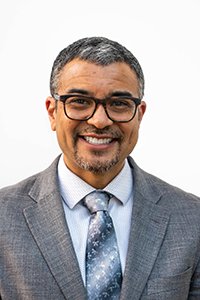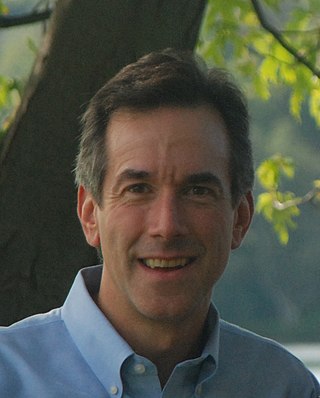
Dyslexia, also known until the 1960s as word blindness, is a learning disability that affects reading. Different people are affected to different degrees. Problems may include difficulties in spelling words, reading quickly, writing words, "sounding out" words in the head, pronouncing words when reading aloud and understanding what one reads. Often these difficulties are first noticed at school. The difficulties are involuntary, and people with this disorder have a normal desire to learn. People with dyslexia have higher rates of attention deficit hyperactivity disorder (ADHD), developmental language disorders, and difficulties with numbers.
A microgyrus is an area of the cerebral cortex that includes only four cortical layers instead of six.
The following outline is provided as an overview of and topical guide to neuroscience:
Alvaro Pascual-Leone is a Spanish-American Professor of Neurology at Harvard Medical School, with which he has been affiliated since 1997. He is currently a Senior Scientist at the Hinda and Arthur Marcus Institute for Aging Research at Hebrew SeniorLife. He was previously the Director of the Berenson-Allen Center for Noninvasive Brain Stimulation and Program Director of the Harvard-Thorndike Clinical Research Center of the Beth Israel Deaconess Medical Center in Boston.

A reading disability is a condition in which a person displays difficulty reading. Examples of reading disabilities include: developmental dyslexia, alexia, and hyperlexia.
The Geschwind–Galaburda hypothesis is a neurological theory proposed by Norman Geschwind and Albert Galaburda in 1987. The hypothesis posits there are sex differences in cognitive abilities by relating them to lateralisation of brain function. The maturation rates of cerebral hemispheres differ and are mediated by circuiting testosterone levels, which are substantially influenced during the foetal and post-puberty development stages.

Behavioral neurology is a subspecialty of neurology that studies the impact of neurological damage and disease upon behavior, memory, and cognition, and the treatment thereof. Two fields associated with behavioral neurology are neuropsychiatry and neuropsychology. In the United States, 'Behavioral Neurology & Neuropsychiatry' has been recognized as a single subspecialty by the United Council for Neurologic Subspecialties (UCNS) since 2004.

Norman Geschwind was a pioneering American behavioral neurologist, best known for his exploration of behavioral neurology through disconnection models based on lesion analysis.

Kenneth M. Heilman is an American behavioral neurologist He is considered one of the fathers of modern-day behavioral neurology.

In human neuroanatomy, brain asymmetry can refer to at least two quite distinct findings:
The history of dyslexia research spans from the late 1800s to the present.
Dyslexia is a reading disorder wherein an individual experiences trouble with reading. Individuals with dyslexia have normal levels of intelligence but can exhibit difficulties with spelling, reading fluency, pronunciation, "sounding out" words, writing out words, and reading comprehension. The neurological nature and underlying causes of dyslexia are an active area of research. However, some experts believe that the distinction of dyslexia as a separate reading disorder and therefore recognized disability is a topic of some controversy.

Maryanne Wolf is a scholar, teacher, and advocate for children and literacy around the world. She is the UCLA Professor-in-Residence of Education, Director of the UCLA Center for Dyslexia, Diverse Learners, and Social Justice, and the Chapman University Presidential Fellow (2018-2022). She is also the former John DiBiaggio Professor of Citizenship and Public Service, Director of the Center for Reading and Language Research, and Professor in the Eliot-Pearson Department of Child Study and Human Development at Tufts University. She is a permanent academician in the Pontifical Academy of Science. She was recently made an Honorary Advisory Fellow on the United Sigma Intelligence Association.
Clinical neuroscience is a branch of neuroscience that focuses on the scientific study of fundamental mechanisms that underlie diseases and disorders of the brain and central nervous system. It seeks to develop new ways of conceptualizing and diagnosing such disorders and ultimately of developing novel treatments.
Usha Claire Goswami is a researcher and professor of Cognitive Developmental Neuroscience at the University of Cambridge, a Fellow of St. John's College, Cambridge, and the director of the Centre for Neuroscience in Education, Downing Site. She obtained her Ph.D. in developmental psychology from the University of Oxford before becoming a professor of cognitive developmental psychology at the University College London. Goswami's work is primarily in educational neuroscience with major focuses on reading development and developmental dyslexia.
Michael E. Goldberg, also known as Mickey Goldberg, is an American neuroscientist and David Mahoney Professor at Columbia University. He is known for his work on the mechanisms of the mammalian eye in relation to brain activity. He served as president of the Society for Neuroscience from 2009 to 2010.

Roy Hamilton is professor in the departments of Neurology, Psychiatry, and Physical Medicine and Rehabilitation at University of Pennsylvania (Penn). He is the Director of Penn's Laboratory for Cognition and Neural Stimulation (LCNS), and launched the Brain Stimulation, Translation, Innovation, and Modulation Center (brainSTIM) at the University of Pennsylvania in 2020.

Dominick P. Purpura was a neuroscientist. who was well known for his research focused on intellectual disability. His work also focused on the origin of brain waves, developmental neurobiology, and epilepsy. From 1982 to 1983, Purpura was appointed as the president of the Society for Neuroscience. In 1984, he was recruited to be the dean of Albert Einstein College of Medicine of Yeshiva University. He served as the dean for a total of 22 years.

Andrew E. Budson is an American neurologist, academic and researcher. He is a Professor of Neurology at Boston University School of Medicine, Lecturer in Neurology at Harvard Medical School, Chief of Cognitive and Behavioral Neurology and Associate Chief of Staff for Education at the Veterans Affairs (VA) Boston Healthcare System, where he also serves as a Director of the Center for Translational Cognitive Neuroscience. He is Associate Director and Outreach, Recruitment, and Engagement Core Leader at the Boston University Alzheimer’s Disease Research Center.
Reid Lyon is a neuroscientist (neuropsychology), specialist in learning disorders, and researcher on the science of reading.








